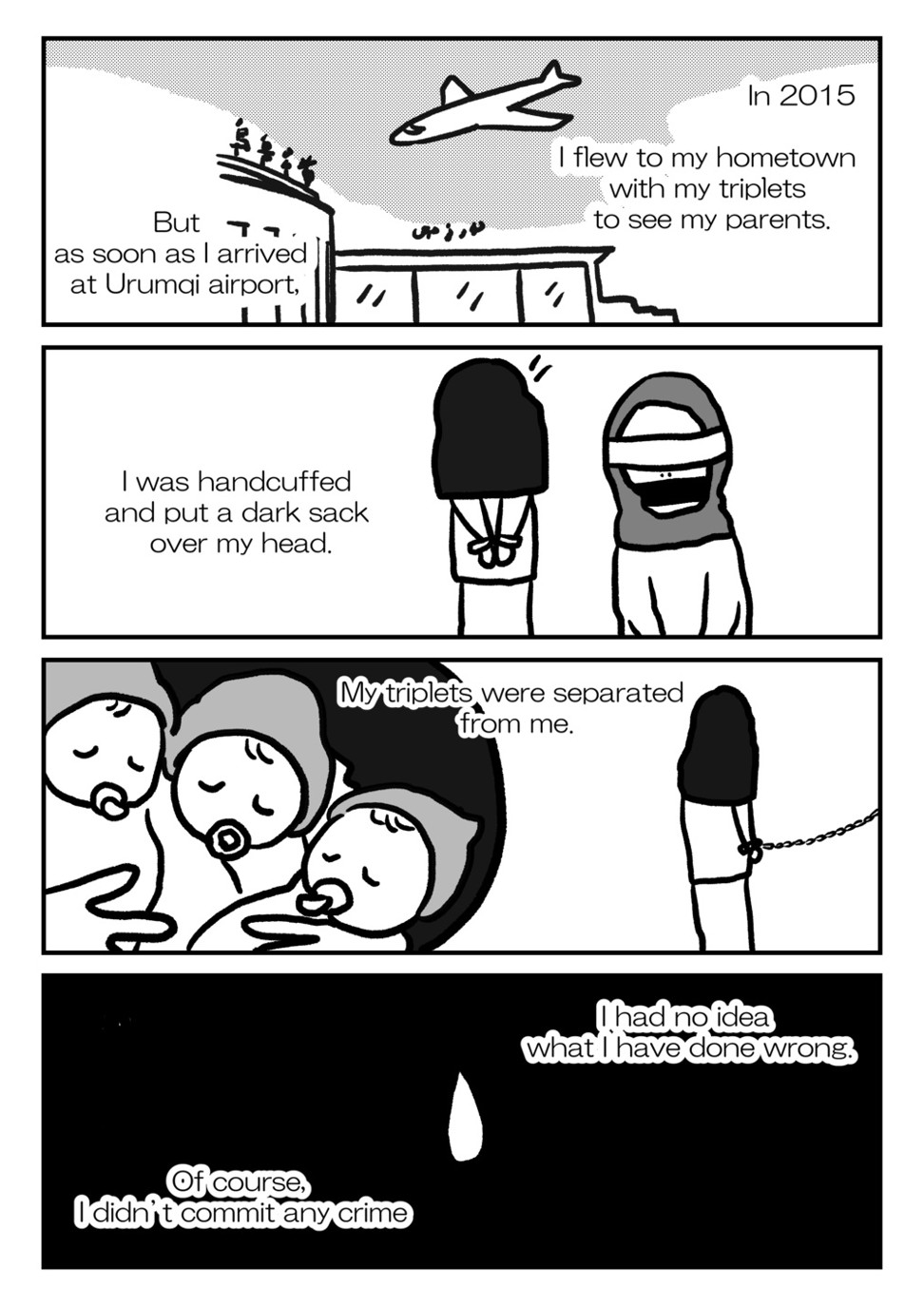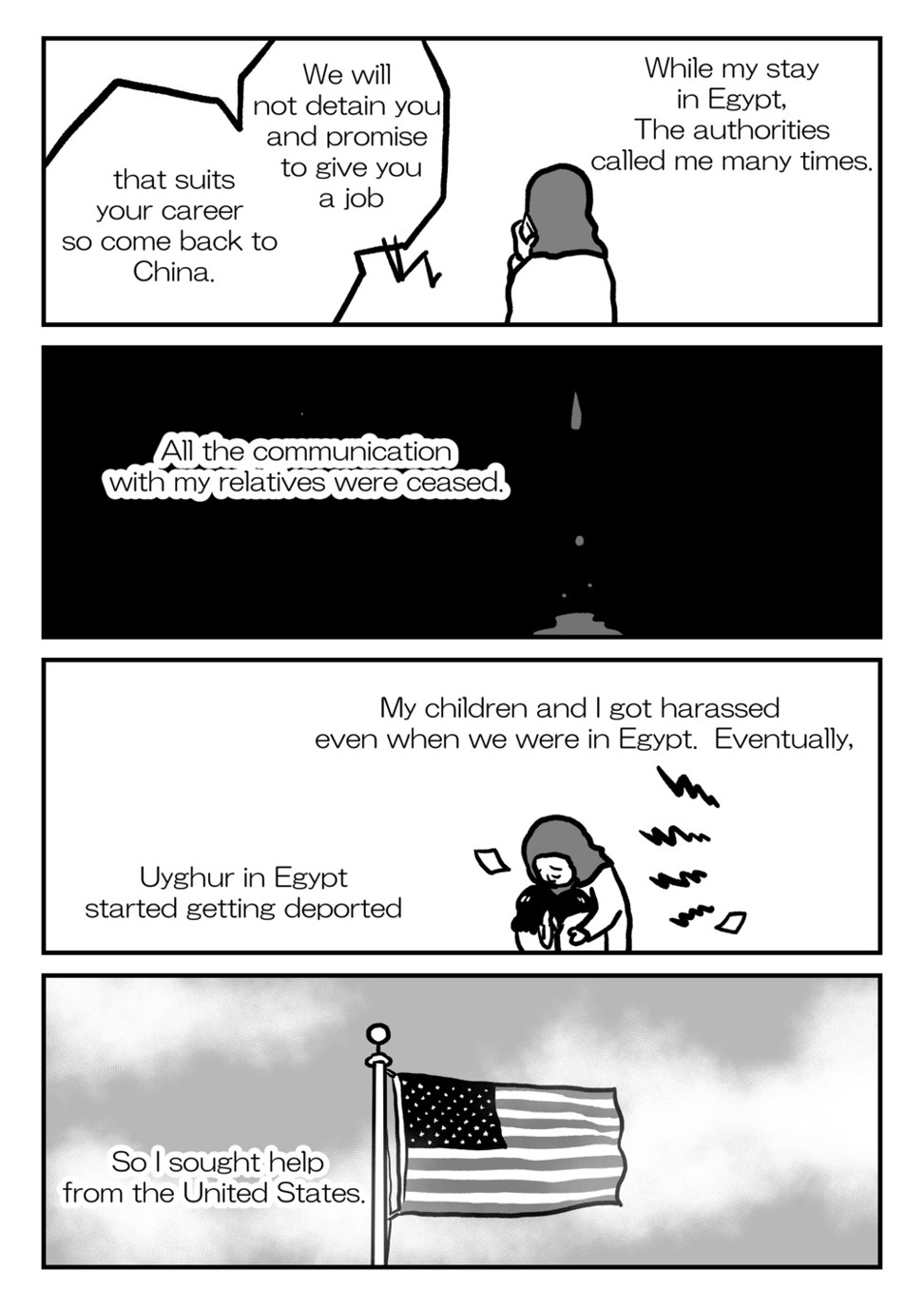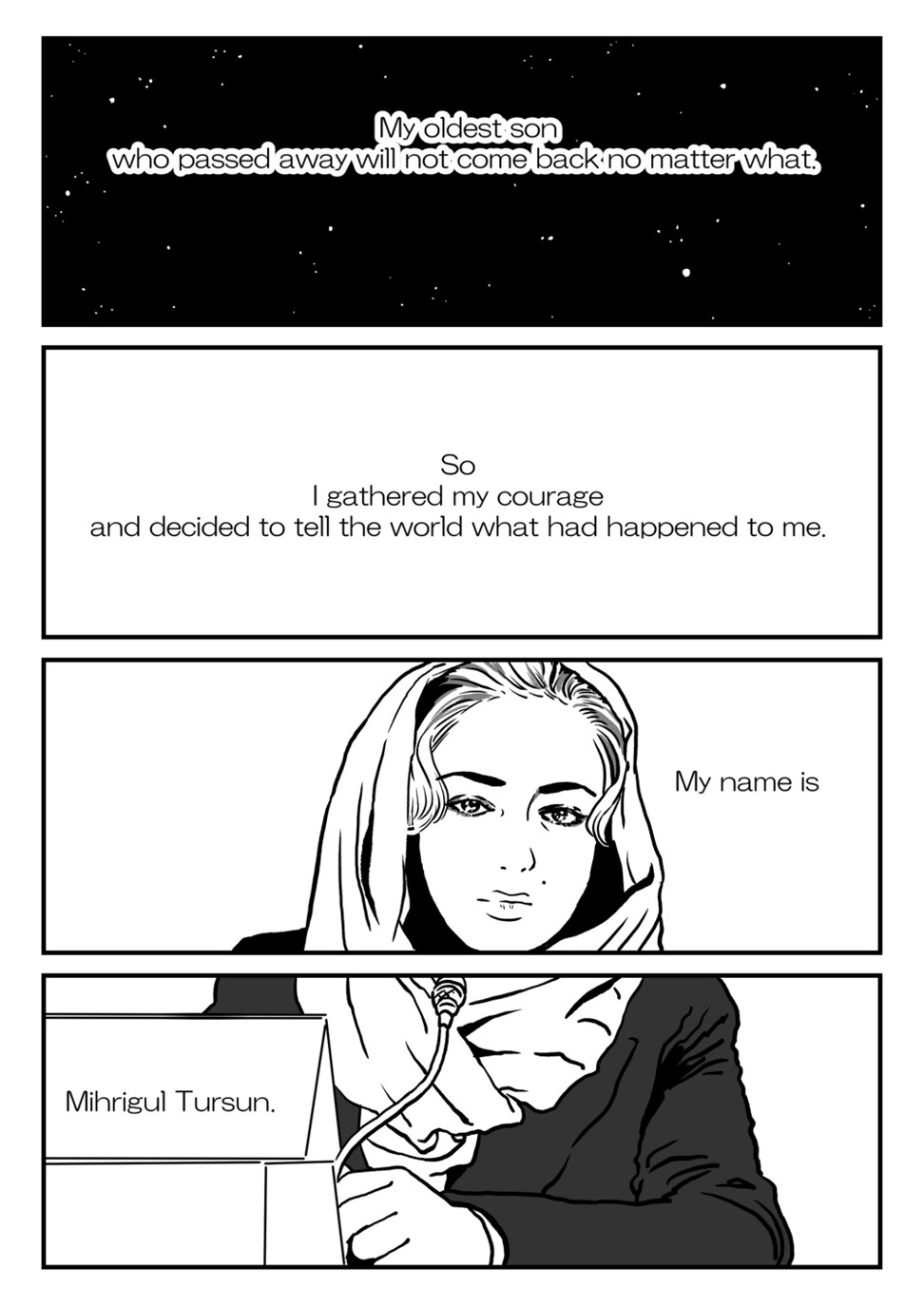
Manga comic about Uygur woman’s ordeal in China a viral hit, despite lack of publicity and shunning by publishers
- Mihrigul Tursun’s story starts in 2015 when she was handcuffed at Urumqi airport, hooded and had her triplets separated from her
- A manga drawn by Japanese artist Tomomi Shimizu has been translated into English, Chinese and Uygur and viewed more than 240,000 times online
A Japanese comic book telling the powerful and tragic tale of a 29-year-old Uygur woman from China has become a surprise viral hit.
What Has Happened to Me – A Testimony of a Uygur Woman recounts the story told by Mihrigul Tursun, a member of the Muslim minority in western China that has faced relentless crackdowns from authorities in Beijing.
The manga – as all comic-style works are known in Japan – describes Tursun’s imprisonment and torture by the Chinese government, the death of one of her young children while in custody, and the jailing of her husband for 16 years.
Drawn by Japanese artist Tomomi Shimizu, the manga has been translated into English, Chinese and Uygur. Shimizu said it has now been viewed on her website more than 240,000 times and her tweets have drawn more than 2.6 million likes, retweets and other online engagement. The manga has been cited by pro-democracy protesters on the streets of Hong Kong and generated feedback from the United States to Europe, and from Russia to Taiwan.

China has incarcerated at least 1 million Uygurs in re-education camps in its western Xinjiang region. The mass internment is framed by Beijing as a war on extremism, but it has been widely denounced as an attempt to stamp out Uygur culture and Islam, and replace it with devotion to President Xi Jinping and the Communist Party.
Shimizu has not been in direct contact with Tursun, who now lives in the United States with her two surviving children. But the artist says she was inspired after hearing about the repression of the Uygurs and then hearing Tursun’s story.
“I thought, ‘What can I do?’” she said. “I started drawing cartoons 20 years ago, and I thought, ‘I can do manga.’”

It begins with Tursun’s marriage in Egypt five years ago, and of the birth of healthy triplets.
In 2015, Tursun flew to her hometown in China with her triplets to see her parents. “But as soon as I arrived at Urumqi airport, I was handcuffed and a dark sack was put over my head,” the manga quotes her as saying. “My triplets were separated from me.”
Tursun says she had “no idea” what she was supposed to have done wrong. “Of course I didn’t commit any crime.”

She says she was interrogated and tortured with electric shocks, before eventually being handed the dead body of her eldest son. All three children bore scars of being operated on in their neck areas, she said – a doctor told her this was done to insert feeding tubes.
Soon after being released, Tursun was detained again and taken to a crowded prison camp, where she was repeatedly beaten and deprived of sleep.
“During day time, we had to pray to the chairman of the Communist Party to live long, and sing songs hailing communism,” she said. “They forced us to take different kinds of unknown pills and have injections every single day.”

Tursun was sent to a mental hospital after losing consciousness during a beating and then released a second time, only to have two Chinese cadres move into her home, eating her food and following her everywhere. She was soon detained a third time, forced to wear an orange prison uniform and told to prepare for her death in prison.
Finally, only because her children hold Egyptian citizenship, she was released to take them back to that country. But, in a cruel twist, 26 of her relatives were then detained by the Chinese government, and she was told they would only be released if she returned to China within two months, she said.
I know it is tough for mainstream television networks, but I just want ordinary people to know about this situation and think about it
Shimizu first heard about China’s treatment of the Uygurs from a TV documentary, and her first manga on the subject in May was titled No One Will Say the Name of that Country.
In it, she described the destruction of mosques, the establishment of a surveillance state, the disappearance of young men, the ripping apart of families as internment camps were established – and finally the arrest of one woman for daring to call her land “East Turkestan”, a term used by Uygur separatists to refer to Xinjiang.
That manga brought her to the attention of Uygurs living in Japan, and she heard Tursun’s story at an event organised by Amnesty International and Tokyo’s Meiji University.
Shimizu says her manga has had little coverage in Japanese media, with one scheduled television appearance cancelled at the last minute. Similarly, she says several editors are keen on publishing the manga, but she has been told publishers are reluctant.
She suspects self-censorship and business ties with China make the story a little too sensitive for Japan’s cautious, corporate media and publishing industry.
“I know it is tough for mainstream television networks, but I just want ordinary people to know about this situation and think about it,” she said. “This is not about some poor people in a remote country. I want people to see this as an issue relevant to Japan. These Uygur people were also living an ordinary life, just like us.”

Tursun’s story ends with her returning to Egypt, only to find her husband had followed her to China to look for her – and was arrested and sentenced to 16 years in prison. Even after getting US asylum, Tursun said she has been pursued and harassed by Chinese agents.
Tursun testified before the Congressional-Executive Commission on China in the US and appeared at the National Press Club in Washington in November 2018.
The Chinese Foreign Ministry disputes her version of events, saying she was taken into custody “on suspicion of inciting ethnic hatred and discrimination” but was only held for 20 days before being released. Chinese officials said she was never sent to a “vocational education and training centre”, as Beijing calls the camps.
Xinjiang sold as tourist idyll amid Uygur re-education camps
The ministry also denied that one of her sons died in hospital in Urumqi, suggesting he had been taken to Turkey and entrusted to the care of a relative, calling her account “a lie fabricated with ulterior motives”.
“My oldest son who passed away will not come back no matter what,” Tursun says in the manga’s closing pages. “So I gathered my courage and decided to tell the world what happened to me.”

